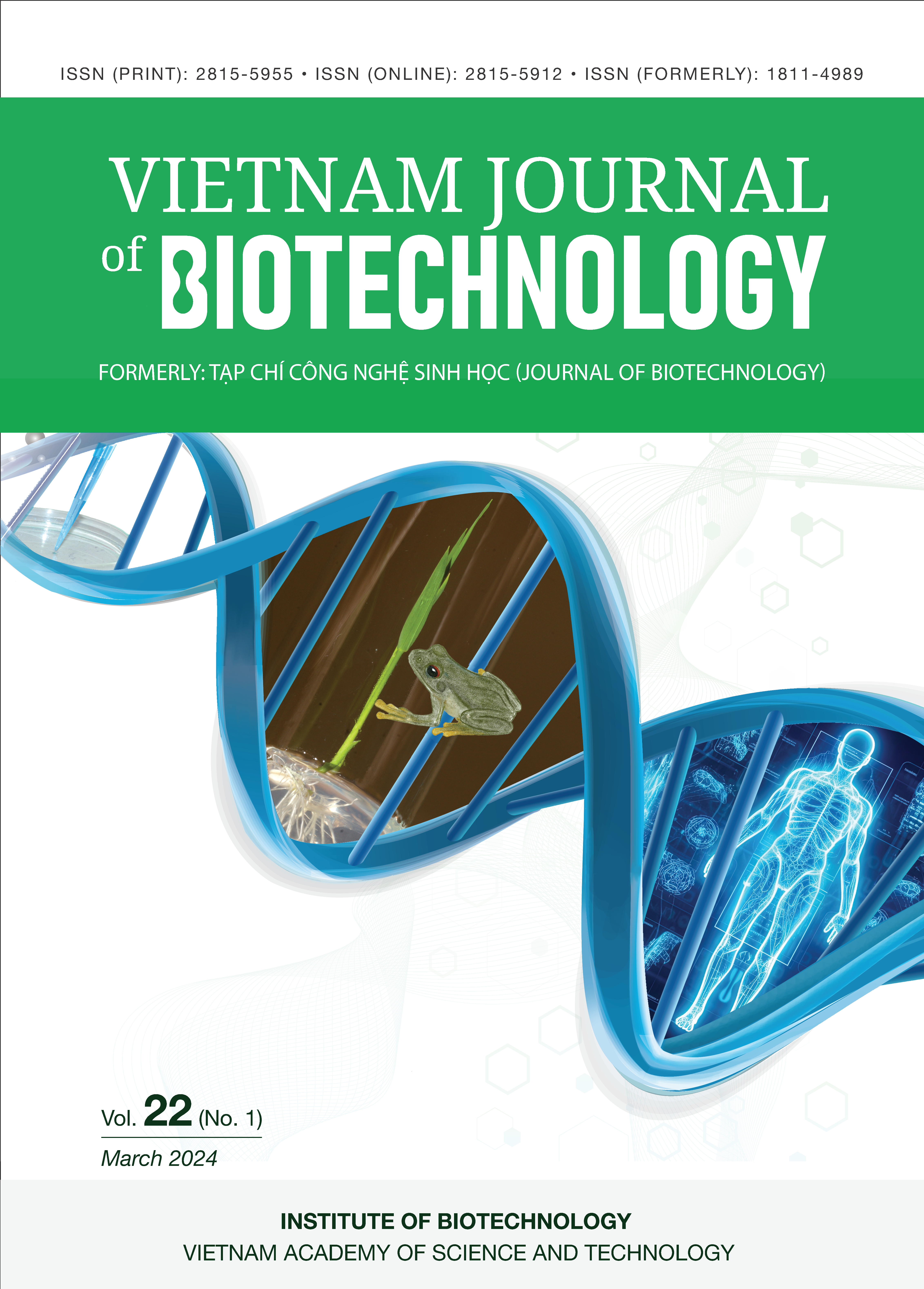Purification and activity determination of recombinant human SUMO protease’s active region fused with thioredoxin
Author affiliations
DOI:
https://doi.org/10.15625/vjbt-20368Keywords:
thioredoxin, SUMO protease, recombinant expression, purification, E. coliAbstract
SUMO (Small Ubiquitin-related Modifier) protease is widely used for recombinant protein expression, but obtaining the protein from derivative sources is challenging due to the degradation during extraction and high costs. In a previous report, we expressed the human SUMO protease’s active region (SENP2) fused with thioredoxin (Trx-SENP2) in E. coli BL21 (DE3). The recombinant fusion protein was soluble. In this study, we present the results of purification and activity evaluation of soluble Trx-SENP2. The enzyme was effectively purified through a single step Ni2 affinity chromatography. Trx-SENP2 was bound to the column in a binding buffer containing 50 mM PBS, 500 mM NaCl, 50 mM imidazol, pH 7.4 and eluted in the basic buffer containing 300 mM imidazol. The purity of the enzyme obtained after purification reached over 98% and yield of Trx-SENP2 was 361 mg/liter of bacterial culture. Importantly, the Trx-SENP2 was biologically active and capable of degrading recombinant SUMO-fused proteins. The protease’s bioactivity, as measured by its ability to cleave SUMO-IL11 into SUMO and IL11 fragments, was 3.33 × 105 U/mg comparable to commercial enzymes. Moreover, the Trx-SENP2 was found to be effective activity under a variety of conditions, including different buffers with high salt and imidazole concentrations and a wide range of pH values. Thus, the properties are useful and easy for the application of the enzyme to cleave recombinant SUMO-fused protein in the process of purification to obtain target proteins. The present study introduces a highly active and easily applicable enzyme for research in recombinant DNA technology.







